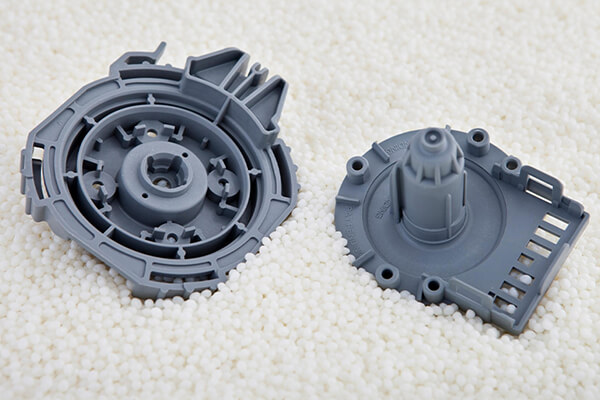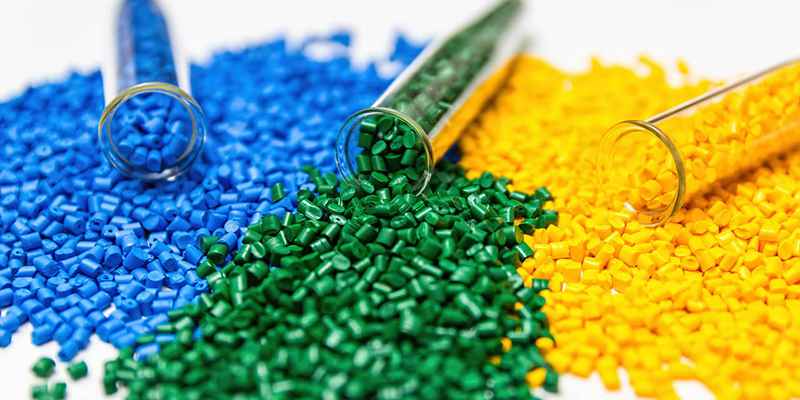ABS Parts: A Practical Guideline Of ABS Material

Sungpalstic company provides custom ABS parts manufacturing services globally. If you are planning to manufacture ABS parts, you will know more from this practical guideline of ABS material.
What is ABS?
ABS stands for Acrylonitrile Butadiene Styrene. It is known for its versatility and is used in a wide range of applications due to its desirable properties. It is a technical thermoplastic that is resistant to impact. It has an amorphous polymer. Three monomers combine to form ABS: acrylonitrile, butadiene, and styrene.
Acrylonitrile: It is a synthetic monomer. Ammonia and propylene are used to make it. This element helps ABS maintain its thermal stability and chemical resistance.
Butadiene: It is created as a by-product of steam crackers, which produce ethylene. This element gives ABS polymer toughness and impact strength.
Styrene: It’s produced by the dehydrogenation of ethyl benzene. It gives ABS plastic stiffness and processability.
ABS Properties
- Strength and Durability
ABS is a strong and tough material, making it suitable for applications that require impact resistance and durability. It can withstand a variety of physical stresses without breaking or shattering. - Heat Resistance
ABS can withstand moderate temperatures and is often used in applications where it will encounter heat, such as automotive parts, electrical enclosures, and consumer electronics. - Chemical Resistance
It has good resistance to many chemicals, making it suitable for use in various industrial settings. - Ease of Processing
ABS is easy to process using various methods such as injection molding, extrusion, and 3D printing. This ease of processing makes it a popular choice for manufacturers. - Surface Finish
ABS can be easily machined, sanded, and painted, allowing for the creation of smooth and aesthetically pleasing ABS parts and products. - Electrical Insulation
It is an excellent electrical insulator, which makes it suitable for electrical and electronic components. - Weight-to-Strength Ratio
ABS has a favorable weight-to-strength ratio, making it useful in lightweight structural applications. - Low Toxicity
ABS is considered safe for use in contact with food and drink, as it does not release harmful chemicals under normal conditions.
How to Make ABS Parts?
ABS (Acrylonitrile Butadiene Styrene) parts refer to components or objects that are manufactured using ABS material. These parts are made by molding or forming ABS plastic into specific shapes and configurations, depending on the complexity of the part, production volume, and desired properties.
ABS Injection Molding
Injection molding is one of the most common methods for manufacturing ABS parts. It involves melting ABS pellets and injecting the molten material into a mold cavity.
Advantages: High production rates, precise and complex part geometries, consistent quality.
Process:
- ABS pellets are loaded into a hopper.
- The pellets are fed into a heated barrel where they are melted.
- The molten ABS is injected into a mold cavity under high pressure.
- The material cools and solidifies inside the mold.
- The mold is opened, and the finished part is ejected.
ABS CNC Machining
ABS CNC machining involves cutting, milling, or drilling ABS blocks to create precise ABS parts.
Advantages: ABS CNC machining is suitable for small to medium production runs, precise and intricate parts.
Process:
- A computer-controlled machine tool removes material from an ABS block according to a pre-programmed design.
- The part is shaped and finished using various cutting tools.
Extrusion
Extrusion is a process used for creating continuous lengths of ABS with a consistent cross-sectional shape, such as pipes or tubing.
Advantages: Continuous production, cost-effective for long profiles.
Process:
- ABS pellets are fed into an extruder.
- The pellets are melted and forced through a die that shapes the ABS into the desired profile.
- The extruded material is cooled and cut into the desired lengths.
ABS Blow Molding
ABS blow molding is a manufacturing process used to create hollow ABS parts and containers from ABS material. This process is particularly suitable for producing items such as bottles, containers, automotive ducts, and certain types of consumer and industrial products.
There are three main types of blow molding: extrusion blow molding, injection blow molding, and stretch blow molding. ABS can be used in all of these methods, but extrusion blow molding is most commonly associated with ABS.The choice between blow molding and other manufacturing processes depends on factors such as part design, production volume, and cost considerations.
Advantages:
- Suitable for producing hollow ABS parts with complex shapes.
- Cost-effective for large quantities of ABS parts.
- Consistent wall thickness in the final product.
- Minimal post-processing required.
Process:
- ABS resin is first melted and formed into a tube-shaped parison (a hollow tube of plastic).
- This parison is placed into a mold cavity with the desired shape of the part.
- Compressed air is introduced into the parison, causing it to expand and take the shape of the mold.
- The plastic is cooled and solidifies in the mold.
- The mold is opened, and the finished hollow ABS part is ejected.
Thermoforming
Thermoforming is used for creating ABS parts with simple shapes, such as packaging trays, panels, and covers.
Advantages: Cost-effective for low-volume production, suitable for large, shallow ABS parts.
Process:
- A sheet of ABS is heated until it becomes pliable.
- The heated sheet is then placed over a mold, and a vacuum or pressure is used to shape it over the mold.
- The part cools and retains the shape of the mold.
3D Printing(Additive Manufacturing)
3D printing, specifically Fused Deposition Modeling (FDM) or Fused Filament Fabrication (FFF), allows for the creation of ABS parts layer by layer.
Advantages: Ideal for rapid prototyping and low-volume production, complex geometries.
Process:
- ABS filament is loaded into a 3D printer.
- The printer heats the filament and deposits it layer by layer to build the part.
- After printing, the part may require post-processing like sanding or smoothing for a better finish.
Assembly
In many cases, ABS parts are not produced as standalone items but are assembled into larger products. This may involve techniques like welding, gluing, or fastening to join multiple ABS components together.
The choice of manufacturing method depends on factors such as the part’s complexity, quantity needed, desired quality, and available equipment. Each method has its advantages and limitations, and selecting the most appropriate one is crucial for achieving the desired results.
Applications of ABS Parts
- Automotive Parts
ABS is used in various automotive components, including dashboards, interior trim, bumpers, and grilles. - Consumer Electronics
It is used in the manufacturing of computer keyboards, remote controls, and housing for electronic devices. - Toys
Many toys, especially plastic building blocks like LEGO, are made from ABS due to its durability and ease of molding. - Pipes and Fittings
ABS pipes and fittings are used in plumbing and drainage systems. - Luggage and Cases
ABS is commonly used in the production of suitcases, protective cases, and luggage due to its impact resistance. - Medical Devices
ABS is used in the manufacturing of medical devices and equipment due to its biocompatibility and ease of sterilization. - Prototyping and 3D Printing
ABS is a popular filament material for 3D printing, known for its strength and ease of use in this application.
ABS Parts Manufacturing Services–Sungplastic
Sungplastic company is an expert in ABS parts machining. We have extensive capabilities of ABS CNC machining, injection molding, extrusion, blowing molding, 3D printing, bending, heating, bonding, welding, and vacuum forming. More services include engraving, assembly and surface finishes. Thanks to our vast fabrication techniques and machinery, we can provide you with a comprehensive range of resources and knowledge, from material selection to design and testing.
We enable to produce custom-machined, high precision ABS parts to meet your exact design requirements and have rich experience in making bespoke plastic parts and ABS parts meeting to customer specifications, drawings, or samples. Our professionals and skilled workers teams will assist you in completing the ABS parts projects.
We endeavor to offer you the most cutting-edge solutions and quality workmanship in ABS parts fabrication.
Get a free quote and design analysis today.
We’ll reply to you within 6 working hours.
We respect your privacy.
+86 139 2927 4777 (WhatsApp, Wechat)

